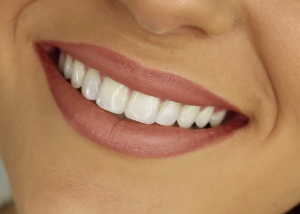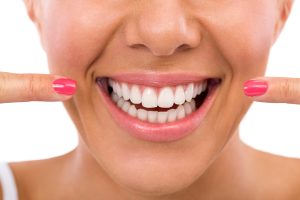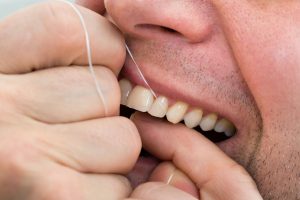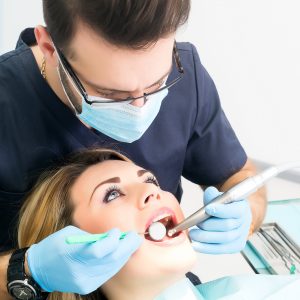Gum disease and tooth loss may be associated with a higher risk of death in postmenopausal women but not increased cardiovascular disease risk, according to new research in Journal of the American Heart Association, the open access journal of the American Heart Association/American Stroke Association.
Loss of all natural teeth also was linked with an increased risk of death in postmenopausal women, according to the study.
Periodontal disease, a chronic inflammatory disease of the gum and connective tissue surrounding the teeth, affects nearly two-thirds of U.S. adults 60 and older. The loss of all one’s teeth, called edentulism, impacts about one-third of U.S. adults 60 and older and often results from periodontal disease.
Researchers analyzed the health information from the Women’s Health Initiative program—a study of 57,001 women, 55 years and older.
In 6.7-year follow up of postmenopausal women studied, they found:
- History of periodontal disease was associated with a 12 percent higher risk of death from any cause.
- Loss of all natural teeth was associated with a 17 percent higher risk of death from any cause. The risk of death associated with periodontal disease was comparable regardless of how often women saw their dentists.
- Women who had lost their teeth were older, had more CVD risk factors, less education and visited the dentist less frequently compared to women with their teeth.
If you, your family or friends need dental care, we would be honored to provide you with state-of-the-art dental care in our modern dental practice. Refer someone you love to someone you trust!
Presented as a service to the community by Doctors Hoover and Yanda,
39 Milford Drive, Hudson, Ohio 44236. 330-650-0360. www.drshooverandyanda.com






 A: There are at least three main methods people use to have their teeth whitened. There are over-the-counter methods available in most pharmacies. There are methods that are done entirely within the dental office. Lastly, there are methods that involve having trays fitted by a dentist that are then worn at home. Over-the-counter methods are the least expensive. They do work to a certain extent but tend to take longer and their “one size fits all” feature doesn’t work for everyone. Methods that are done entirely within the dental office and those involving custom-made trays by the dentist that are then worn at home both are more likely to brighten teeth more quickly and effectively. We choose to fabricate trays in our office for one major reason. All bleaching eventually fades and then requires whitening again to regain that brighter smile. With “in-office only” methods, they need to be done entirely over at full fee and that fee is typically higher than the custom tray method. With the custom tray method, when whitening is needed again since you still have the trays, the only expense with subsequent treatments is to purchase the tubes of bleach. That cost is minimal compared to starting all over again. Many of our patients choose the start of a new year as the perfect time to whiten their teeth.
A: There are at least three main methods people use to have their teeth whitened. There are over-the-counter methods available in most pharmacies. There are methods that are done entirely within the dental office. Lastly, there are methods that involve having trays fitted by a dentist that are then worn at home. Over-the-counter methods are the least expensive. They do work to a certain extent but tend to take longer and their “one size fits all” feature doesn’t work for everyone. Methods that are done entirely within the dental office and those involving custom-made trays by the dentist that are then worn at home both are more likely to brighten teeth more quickly and effectively. We choose to fabricate trays in our office for one major reason. All bleaching eventually fades and then requires whitening again to regain that brighter smile. With “in-office only” methods, they need to be done entirely over at full fee and that fee is typically higher than the custom tray method. With the custom tray method, when whitening is needed again since you still have the trays, the only expense with subsequent treatments is to purchase the tubes of bleach. That cost is minimal compared to starting all over again. Many of our patients choose the start of a new year as the perfect time to whiten their teeth. People with Alzheimer’s disease may need some help with basic grooming and dressing tasks, including taking care of their teeth and mouth. As a caregiver, you can help!
People with Alzheimer’s disease may need some help with basic grooming and dressing tasks, including taking care of their teeth and mouth. As a caregiver, you can help! Brushing twice a day with an ADA certified fluoride toothpaste and flossing with dental floss or an interdental cleaner once a day is advised. Keep appointments with your dentist and hygienist for routine check-ups and teeth cleanings.
Brushing twice a day with an ADA certified fluoride toothpaste and flossing with dental floss or an interdental cleaner once a day is advised. Keep appointments with your dentist and hygienist for routine check-ups and teeth cleanings. To perform the crown procedure, your dentist prepares the tooth and makes a molded impression or a digital scan of your teeth to send to a dental laboratory. A custom-made temporary crown is created during this visit to protect the tooth while the final restoration is being made in the dental laboratory. Once completed, the crown will be cemented or adhesively bonded at a second visit.
To perform the crown procedure, your dentist prepares the tooth and makes a molded impression or a digital scan of your teeth to send to a dental laboratory. A custom-made temporary crown is created during this visit to protect the tooth while the final restoration is being made in the dental laboratory. Once completed, the crown will be cemented or adhesively bonded at a second visit.